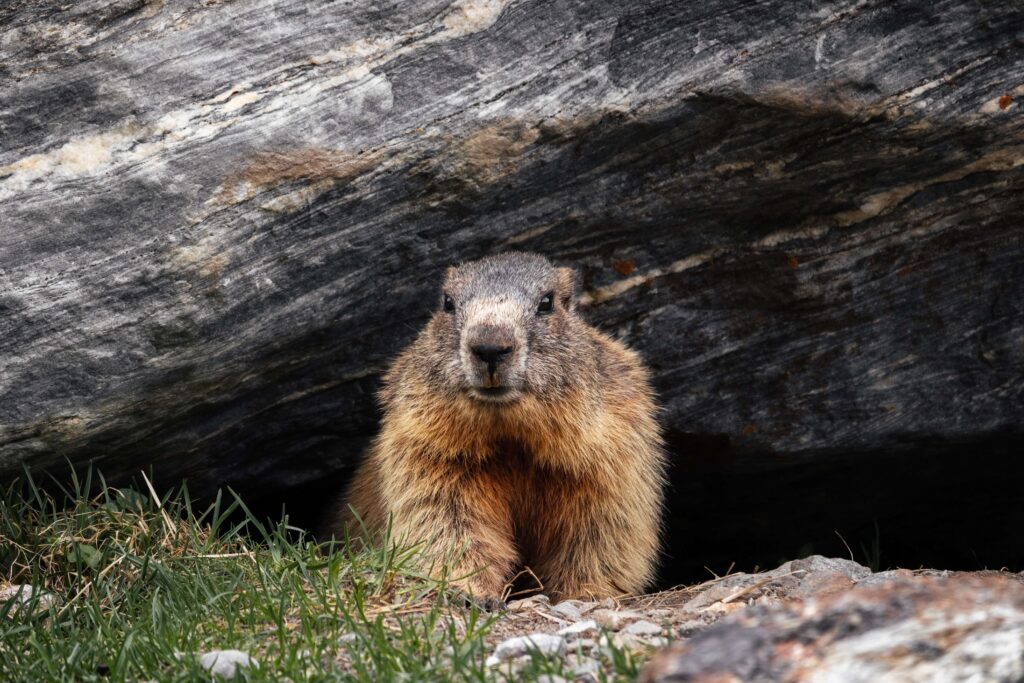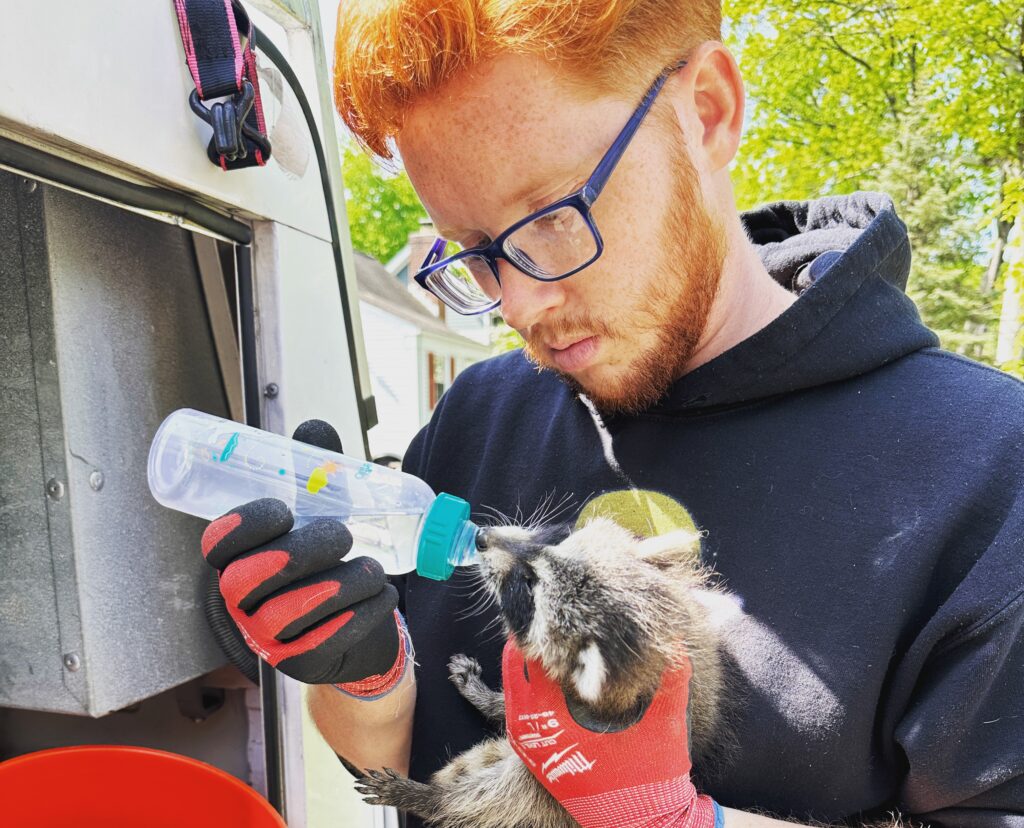Groundhogs, also known as woodchucks, are notorious for their burrowing habits and the significant damage they can inflict on yards and gardens. These creatures can undermine the integrity of your landscape, causing structural issues and damaging plants. Groundhogs dig extensive tunnel systems that can destabilize the ground, making it difficult for plants to thrive and creating potential hazards for structures. Understanding the necessity of effective groundhog removal is crucial for any homeowner who wants to maintain a healthy and aesthetically pleasing yard.
The process of groundhog removal involves more than simply getting rid of these pests. It requires a comprehensive approach that includes understanding groundhog behavior, implementing effective removal methods, and taking preventative measures to ensure they do not return. Groundhogs are typically active during the warmer months and are drawn to areas with abundant food sources, such as gardens with vegetables and fruits. Their burrows, often located near these food sources, can be difficult to detect until significant damage has already occurred.
Key Takeaways
- Effective groundhog removal involves understanding their behavior and implementing targeted strategies like trapping and habitat modification.
- Fencing and barriers are essential for preventing groundhogs from entering your yard by addressing their burrowing and climbing abilities.
- Using repellents and deterrents, such as spicy sprays or predator urine, can help create an unappealing environment for groundhogs.
- Professional pest control services, like Kritter Catchers, provide humane and comprehensive solutions for groundhog removal and prevention.
- Regular maintenance and monitoring are crucial for ensuring long-term success in keeping groundhogs away and protecting your yard from damage.
Understanding Groundhog Behavior
To achieve effective groundhog removal, it is essential to first understand the behavior and habits of these animals. Groundhogs, also known as woodchucks, are burrowing rodents that create extensive underground tunnel systems. These tunnels can extend up to 45 feet in length and can be as deep as five feet. This burrowing behavior is primarily driven by their need to find food, create shelters, and hibernate during the winter months.
Groundhogs are most active during the warmer parts of the year, typically emerging from their burrows in early spring. They are predominantly herbivores, feeding on a variety of plants, including vegetables, fruits, and flowers. This diet makes gardens and yards with abundant vegetation particularly attractive to them. Understanding this aspect of their behavior is crucial for groundhog removal, as it helps identify potential attractants and vulnerable areas in your yard.
Groundhogs are also known for their keen senses of smell and hearing, which they use to detect predators and find food. This heightened sensory awareness can make trapping and repelling them a challenging task. However, by understanding their behavioral patterns and preferences, you can implement targeted groundhog removal methods that effectively address their specific habits. In the following sections, we will explore various methods that leverage this understanding to ensure successful groundhog removal and long-term prevention.
Method 1: Humane Trapping and Relocation
One of the most effective and compassionate approaches to groundhog removal is humane trapping and relocation. This method allows you to capture groundhogs without causing them harm and then move them to a more suitable environment far from your yard. It involves the use of live traps, which are specifically designed to safely capture these animals.
To begin the process, it is essential to select the right type of live trap. These traps should be large enough to comfortably hold a groundhog and sturdy enough to prevent escape. Baiting the trap with food that groundhogs find irresistible, such as fresh vegetables, fruits, or peanut butter, increases the likelihood of a successful capture. The trap should be placed near the entrance of the groundhog’s burrow or along their well-worn paths to maximize the chances of trapping them.
Once a groundhog is trapped, it is important to handle the cage carefully to minimize stress on the animal. Relocating the groundhog requires choosing a release site that is at least several miles away from your property to ensure they do not return. The chosen location should offer ample food sources, shelter, and be far enough from other residential areas to prevent future conflicts.
Humane trapping and relocation not only address the immediate issue of groundhog removal but also contribute to the well-being of the animal. This method is particularly beneficial in urban and suburban settings where other methods might not be feasible or desirable. Additionally, it is often viewed more favorably by neighbors and local wildlife agencies.

Method 2: Fencing and Barriers
To begin, it is essential to choose the right type of fence. A heavy-duty wire mesh, such as hardware cloth, is recommended due to its durability and ability to withstand groundhog activity. The fence should be buried at least 12 inches underground to prevent groundhogs from digging underneath it. Additionally, the portion of the fence that is underground should bend outward at a 90-degree angle to further deter digging.
Above ground, the fence should extend at least three to four feet high to prevent groundhogs from climbing over it. Adding an outward-facing overhang to the top of the fence can also enhance its effectiveness by making it difficult for groundhogs to climb. This comprehensive approach ensures that both the burrowing and climbing abilities of groundhogs are addressed.
While fencing and barriers require an initial investment of time and resources, they offer a long-term solution for groundhog removal by creating a yard environment that is difficult for these pests to access. Regular maintenance is necessary to ensure that the fence remains intact and effective, particularly after severe weather or potential damage from other animals.
Implementing fencing and barriers not only aids in groundhog removal but also helps protect your yard from other burrowing animals. By creating a secure perimeter, you can enjoy your garden and landscape without the constant threat of groundhog damage, ensuring a more sustainable and pest-free outdoor space.
Method 3: Habitat Modification
Habitat modification is a proactive and effective approach to groundhog removal, focusing on making your yard less appealing to these persistent pests. By altering the environment to reduce food sources and potential shelters, you can discourage groundhogs from settling in your yard in the first place.
The first step in habitat modification is to eliminate or reduce the availability of food that attracts groundhogs. Groundhogs are herbivores that thrive on a diet of vegetables, fruits, and ornamental plants. Removing fallen fruits and regularly harvesting ripe produce can significantly decrease the food supply available to them. Installing raised garden beds or using protective covers can also help keep crops out of reach.
Clearing away brush piles, woodpiles, and tall grass can further reduce the attractiveness of your yard to groundhogs. These areas provide ideal hiding and nesting spots, making your yard a prime target for groundhogs looking for a place to settle. Maintaining a well-manicured lawn and garden, with minimal debris and clutter, can deter groundhogs from making your yard their home.
Composting practices should also be carefully managed. Compost piles can be a major attractant for groundhogs if they contain food scraps. Ensuring that compost bins are secure and inaccessible to groundhogs is an important part of habitat modification. Using enclosed compost bins with tight-fitting lids can help keep these pests away from your yard.
Habitat modification not only aids in groundhog removal but also enhances the overall health and appearance of your yard. By creating an environment that is less inviting to groundhogs, you can enjoy a beautiful and productive garden with minimal pest interference. This method, combined with other strategies, provides a comprehensive approach to managing groundhog populations and protecting your property.
Method 4: Repellents and Deterrents
Another effective deterrent is the use of motion-activated devices. These devices, which can include sprinklers, lights, and noise makers, are triggered by movement and can startle groundhogs, making them think the area is unsafe. The sudden activation of water or noise can be enough to scare groundhogs away and discourage them from returning.
Physical barriers can also serve as deterrents. Placing mesh or netting over garden beds and individual plants can prevent groundhogs from accessing their favorite food sources. Similarly, installing reflective objects, such as old CDs or aluminum foil strips, around the yard can create visual disturbances that groundhogs find unsettling.
Combining these repellents and deterrents with other groundhog removal methods can enhance their effectiveness. For instance, using repellents in conjunction with habitat modification and fencing can provide a comprehensive approach to keeping groundhogs at bay. By creating multiple layers of defense, you can significantly reduce the likelihood of groundhogs returning to your yard.
The use of repellents and deterrents requires ongoing effort and vigilance. Regularly reapplying products and monitoring the effectiveness of your chosen methods is crucial to ensuring long-term success. With a well-planned strategy, you can achieve effective groundhog removal and maintain a yard that is free from the damage caused by these persistent pests.
Method 5: Professional Pest Control Services
Professional pest control services begin with a comprehensive assessment of your property to identify groundhog activity and burrow locations. Experts from Kritter Catchers use their extensive knowledge to develop a customized removal plan tailored to your specific situation. This plan may include a combination of humane trapping, habitat modification, and the installation of deterrents and barriers to prevent future infestations.
One of the primary benefits of hiring Kritter Catchers is their ability to safely and humanely trap groundhogs. Their technicians are trained in the use of specialized equipment and techniques that minimize stress on the animals while ensuring effective capture. Once trapped, the groundhogs are relocated to suitable habitats far from residential areas, ensuring they do not return to your yard.
In addition to groundhog removal, Kritter Catchers provides expert advice on preventing future infestations. This may involve recommendations for landscaping changes, structural modifications, and ongoing maintenance practices that make your property less attractive to groundhogs. Their holistic approach ensures that your yard remains free from groundhog damage over the long term.
Choosing Kritter Catchers for groundhog removal ensures a comprehensive and professional approach to pest management. Their commitment to humane practices, combined with their extensive experience and knowledge, makes them an excellent choice for homeowners seeking a reliable and effective solution. By partnering with Kritter Catchers, you can protect your property and maintain a beautiful, groundhog-free yard.
FAQs
What are the signs that I have a groundhog problem in my yard?
Common signs of a groundhog problem include visible burrows with large openings, often found near structures or in gardens. You may also notice damaged plants, vegetables, or fruits, as groundhogs are herbivores and feed on a variety of garden produce. Fresh dirt mounds near burrow entrances and sightings of groundhogs during the day are additional indicators.
Are groundhogs dangerous to humans or pets?
While groundhogs are generally not aggressive towards humans or pets, they can become defensive if threatened. They have strong teeth and claws that they use for burrowing, which could potentially cause harm if they feel cornered. More commonly, the danger lies in the structural damage they can cause through their burrowing activities, which can undermine foundations, decks, and other structures.
Can I use household items to repel groundhogs?
Yes, some household items can be used to repel groundhogs. For example, sprinkling hot pepper flakes or garlic around your garden can make it less appealing to groundhogs. Ammonia-soaked rags placed near burrows can also act as a deterrent. However, these methods are usually temporary and may need to be part of a broader strategy for effective groundhog removal.
How do professional pest control services ensure humane groundhog removal?
Professional pest control services like Kritter Catchers ensure humane groundhog removal by using live traps specifically designed to capture groundhogs without causing them harm. Once trapped, the groundhogs are safely relocated to suitable habitats far from residential areas. This humane approach prioritizes the well-being of the animals while effectively addressing the problem.
How can I prevent groundhogs from returning after they have been removed?
Preventing groundhogs from returning involves a combination of habitat modification, physical barriers, and deterrents. Removing food sources, such as fallen fruits and accessible garbage, and sealing entry points under structures can make your yard less inviting. Installing fencing that extends underground and using repellents can further deter groundhogs. Regular maintenance and monitoring are key to ensuring long-term success in keeping groundhogs at bay.
Conclusion
In conclusion, effective groundhog removal requires a comprehensive approach that combines understanding groundhog behavior with implementing strategic methods such as humane trapping and relocation, installing fencing and barriers, modifying habitats, and using repellents and deterrents. Each of these methods plays a crucial role in ensuring that your yard remains free from the damage and disruption caused by groundhogs. By employing these techniques, you can protect your garden, plants, and property from these persistent pests.
For homeowners seeking a thorough and professional solution, partnering with experts like Kritter Catchers offers numerous benefits. Their specialized knowledge, humane practices, and advanced pest control technologies ensure that groundhog removal is handled efficiently and effectively. Kritter Catchers not only addresses the immediate problem but also provides valuable advice and preventative measures to keep groundhogs from returning.
Maintaining a groundhog-free yard enhances the beauty and health of your outdoor space, allowing you to enjoy your garden and landscape without worry. With the right strategies in place, you can achieve long-term protection and peace of mind. Call Kritter Catchers now at (973) 747-5455 for expert assistance with groundhog removal and take the first step towards a pristine and pest-free yard.


